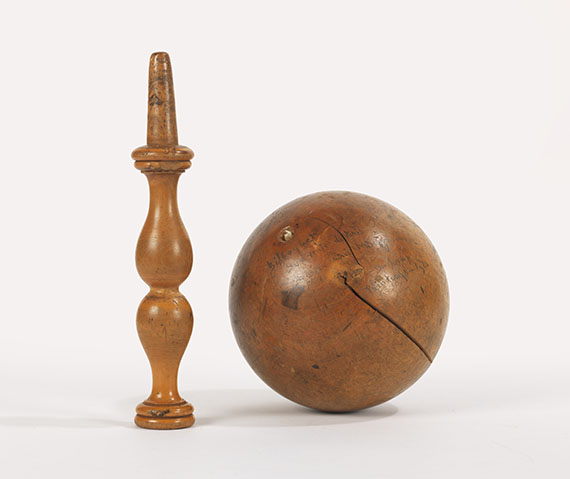Dictionary


Surrealism in Film and Photography
Surrealsim did not only introduce groundbreaking techniques in painting and graphic art, it also made for a new esthetic in film and photography.
Film was a medium of Surrealism as early as of 1924, as works by Man Ray, Francis Picabia and Marcel Duchamp are proof of. However, the main works of surrealist film are from Spain. "Un chien andalou" (An Andalusian Dog) by Luis Buñuel in cooperation with Salvador Dalí from 1929, counts among the most relevant works. A "poetry exempted from all traditions" was the declared goal of the "chien andalou", and the principle of "combinatorics" was also applied. Instead of a logic plot, the film uses an intented absurd montage of confusing sequences that have a shocking effect. The premiere of "chien andalou" was accompanied by music of Beethoven and Wagner, in order to increase the suggestive effect of the moving images. One year after "Un chien andalou" the film "L'Âge d'Or" (The Golden Age) followed, also made by Luis Buñuel and Salvador Dalí.
Besides film, the still young technique of photography was integrated into Surrealism as the first art tendency of Modernism - with Jacques-André Boiffard, a photographer even counted among the founding fathers of Parisian Surrealism. Madness, metamorphosis and fetish were the preferred topics of surrealist photography, that also made formal usage of "combinatorics". Man Ray, Eli Lotar, Claude Cahun, Brassaï, Raoul Ubac, Lee Miller and Dora Maar were main representatives of surrealist photography, with which painters such as Salvador Dalí, René Magritte and Hans Bellmer were also experimenting. Thus photography also made major contributions to the esthetic positioning of Surrealism, with its medial openness it proved to have a pioneer function for later developments.
Surrealsim did not only introduce groundbreaking techniques in painting and graphic art, it also made for a new esthetic in film and photography.
Film was a medium of Surrealism as early as of 1924, as works by Man Ray, Francis Picabia and Marcel Duchamp are proof of. However, the main works of surrealist film are from Spain. "Un chien andalou" (An Andalusian Dog) by Luis Buñuel in cooperation with Salvador Dalí from 1929, counts among the most relevant works. A "poetry exempted from all traditions" was the declared goal of the "chien andalou", and the principle of "combinatorics" was also applied. Instead of a logic plot, the film uses an intented absurd montage of confusing sequences that have a shocking effect. The premiere of "chien andalou" was accompanied by music of Beethoven and Wagner, in order to increase the suggestive effect of the moving images. One year after "Un chien andalou" the film "L'Âge d'Or" (The Golden Age) followed, also made by Luis Buñuel and Salvador Dalí.
Besides film, the still young technique of photography was integrated into Surrealism as the first art tendency of Modernism - with Jacques-André Boiffard, a photographer even counted among the founding fathers of Parisian Surrealism. Madness, metamorphosis and fetish were the preferred topics of surrealist photography, that also made formal usage of "combinatorics". Man Ray, Eli Lotar, Claude Cahun, Brassaï, Raoul Ubac, Lee Miller and Dora Maar were main representatives of surrealist photography, with which painters such as Salvador Dalí, René Magritte and Hans Bellmer were also experimenting. Thus photography also made major contributions to the esthetic positioning of Surrealism, with its medial openness it proved to have a pioneer function for later developments.
Offers for Surrealism
Headquarters
Joseph-Wild-Str. 18
81829 Munich
Phone: +49 89 55 244-0
Fax: +49 89 55 244-177
info@kettererkunst.de
Louisa von Saucken / Undine Schleifer
Holstenwall 5
20355 Hamburg
Phone: +49 40 37 49 61-0
Fax: +49 40 37 49 61-66
infohamburg@kettererkunst.de
Dr. Simone Wiechers / Nane Schlage
Fasanenstr. 70
10719 Berlin
Phone: +49 30 88 67 53-63
Fax: +49 30 88 67 56-43
infoberlin@kettererkunst.de
Cordula Lichtenberg
Gertrudenstraße 24-28
50667 Cologne
Phone: +49 221 510 908-15
infokoeln@kettererkunst.de
Hessen
Rhineland-Palatinate
Miriam Heß
Phone: +49 62 21 58 80-038
Fax: +49 62 21 58 80-595
infoheidelberg@kettererkunst.de
We will inform you in time.




